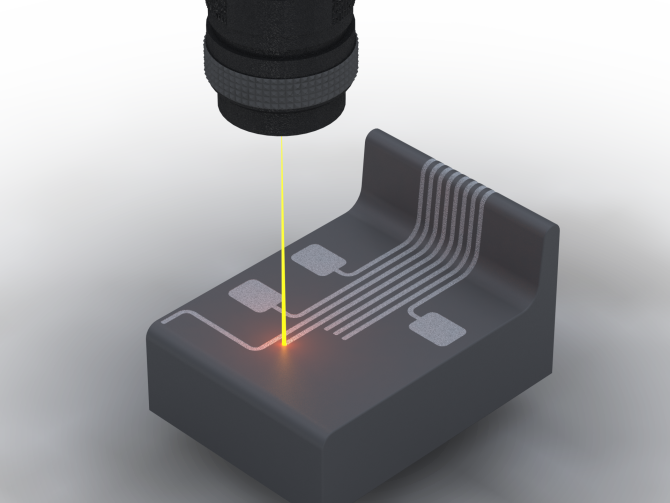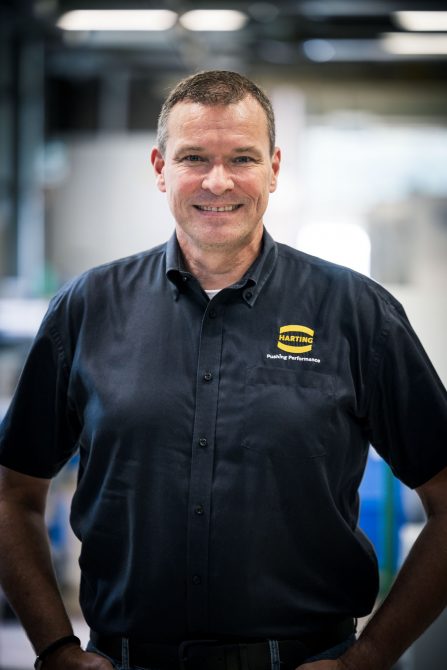Laser immediate structuring (LDS) is a particular achievements story. For practically 20 years, it has been doable to utilize electronic conductor paths specifically onto plastic parts during series production. LDS enables the manufacturing of digital assemblies with adaptable geometric shapes. This approach enables digital products and solutions (this kind of as wise telephones, sensors or professional medical products) to develop into even lesser and extra strong. Automated manufacturing procedures also make this process extra economically beautiful.
There is significantly less and considerably less place obtainable for electronic assemblies, so alternatives are desired which exchange typical printed circuit boards. LDS enables further miniaturization and can make ever more complicated geometric patterns probable. This is a secure and responsible method that has proven alone in excellent-crucial sectors this sort of as healthcare technological innovation or basic safety-pertinent elements for the automotive field.
LDS system allows three-dimensional assemblies
Direct laser structuring enables 3D-MID (Mechatronic Integrated Devices) assemblies to be made. When making use of 3D-MID, electronic parts can be fitted instantly onto a three-dimensional foundation human body, without circuit boards or connecting cables. The foundation human body is manufactured working with an injection moulding procedure, whereby the thermoplastic content has a non-conductive, inorganic additive.

The framework of the conductor route is used making use of the LDS method.
LDS permits digital assemblies to be manufactured in versatile geometric styles. Good telephones, hearing aids and wise watches are turning out to be scaled-down and far more highly effective thanks to this approach. Supply: Harting
The additives in the substance are “activated” by direct laser structuring so that the plastic substance can accommodate the electrical conductor paths. The laser beam writes the areas supposed for the conductor paths and generates a micro-rough structure. The produced steel particles sort the nuclei for the subsequent chemical metallisation. In this way, the electrical conductor paths are applied to the areas marked by the laser. The other parts of the 3-dimensional foundation entire body continue being unchanged. The plastic element can then be assembled in common SMD processes related to a regular PCB. It is also acceptable for soldering in a reflow oven.
Multipurpose software of laser know-how
As one particular of the most significant suppliers of 3D-MID elements exterior of Asia, HARTING works by using large-performance laser devices for the LDS system, with three lasers working in parallel, each offset by 45 degrees. Thanks to an more axis of rotation, elements can be processed by the laser at the same time from all sides (360 levels). This technological innovation permits adaptable geometric styles, this kind of as reflector shells or LED lights, to be made. Regardless of the negligible conductor path thickness of 16 to 20 μm, the conductor paths are nevertheless suitable for demanding automotive elements or for apps with currents up to 10 A – for illustration for heating coils in cameras which are utilized to avoid the optics from fogging up

Least distances amongst the conductor paths (a): 50 – 150μm. Bare minimum width of the conductor paths (b): 50 – 150μm Radius (r): .2mm. Source: Harting
Repeated changes during the electronics development period or new factors with modified dimensions can guide to pricey changes all through standard PCB manufacturing. The laser layout, in distinction, can be adapted incredibly flexibly by employing the parameters of the laser’s command program. No improvements in the injection moulding are demanded for this.
The manufacturing of prototypes utilizing LDS is also less difficult compared to traditional procedures. HARTING can create the plastic base human body applying LDS-appropriate product and 3D printing. Injection moulding can also be employed with inexpensive prototype applications.
New tendencies in the LDS process
Several facets of LDS technological innovation have been improved and more created around the previous handful of many years.
- The performing place of the laser has been enlarged from 160 x 160 x 80 mm to 200 mm x 200 mm x 80 mm, consequently enabling a higher packing density and the processing of even greater components.
- The working velocity of the laser can be doubled to 4 m/s by optimizing the servo units and mirrors which information the laser beam, thereby noticeably lowering the processing time.
- The enhancement of the optics allows the use of a laser with a diameter of 100 μm and a laser with a wonderful aim of 50 μm for processing even lesser buildings.
HARTING is the only 3D-MID manufacturer in the environment that has a laser technique with three fine concentration optics of 50 μm. Even more compact conductor path gaps can be realized thanks to this high-quality concentration laser. Consequently, numerous conductor paths can be produced on the similar component and a increased packing density can be applied. This is employed for protection technologies, between other matters, due to the fact the intently spaced and intertwined conductors are capable of triggering basic safety alarms from even the smallest bodily interference.
Advancements in supplies and economics
Only specially chosen thermoplastics are accredited for the LDS method these are obtainable from stock. The course of action can be further enhanced with customer-distinct adjustments to the plastic materials:
- HARTING takes advantage of a course of action which adds LDS additives to non-certified products to make them MID-suitable.
- Unique RAL or Pantone colors can be obtained with MID plastics by utilizing color pigments and exclusive LDS additives.
- By deciding upon appropriate additives, special RF traits can also be executed, based on the frequency range.

Electronic parts – these types of as LEDs, ICs, photodiodes and sensors – can be connected instantly on to the component provider. The assembled component carriers can then be processed as common SMD components. Supply: Harting
To further strengthen the price-performance of the production method, HARTING depends on automated robotic devices. The LDS laser system is geared up with a rotary indexing table so that a part can be inserted or taken off though one more element is however becoming processed. The in-feed and unloading strategies are automated by HARTING using robotics. This improves throughput and autonomy, though also enabling integration into automatic manufacturing procedures. An added automation phase is furnished throughout the injection moulding approach. Below, too, a robot usually takes over the elimination of the injection moulded sections. The use of robotics also improves the specific reproducibility of the procedures and, thus, total solution high-quality.
Additional development for 3D-MID

The 3D-MID caps defend the electronics from unauthorized entry both of those mechanically and electronically. A extremely specific meandering structure detects each obtain, no subject how modest, and for that reason prevents theft. Resource: Harting
HARTING experiences improved demand for MID projects and has additional expanded the 3D-MID division by investing in equipment and by attaining a competitor’s business. Innovative in-property goods are also contributing to even further progress. HARTING has produced a resolution based mostly on 3D-MID know-how which replaces versatile PCBs with a ingredient carrier. Rather of using a flex-PCB, the element provider can be equipped immediately with electronic elements, as a result conserving up to two thirds of the price tag.
—————————————-
About HARTING 3D-MID
HARTING 3D-MID is offering the comprehensive benefit chain for 3D-MID systems from a single source, which include development/prototyping of customer-unique goods, injection moulding, laser immediate structuring, metallization, assembly and link technology, as properly as remaining inspection. Its core business is the manufacturing of mechatronic components for vehicle manufacturing, sector, healthcare technological innovation and sensor devices.

Dirk Rettschlag, task manager & IE MID at Harting MID.

More Stories
Powering Your Creative Space: Essential Electronics for Modern Art Studios
The Role of Technology in Modern Finance
Top Finance Tips for Building Wealth in 2024